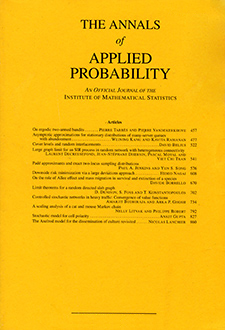Abstract
We consider general exponential random graph models (ergms) where the sufficient statistics are functions of homomorphism counts for a fixed collection of simple graphs . Whereas previous work has shown a degeneracy phenomenon in dense ergms, we show this can be cured by raising the sufficient statistics to a fractional power. We rigorously establish the naïve mean-field approximation for the partition function of the corresponding Gibbs measures, and in case of “ferromagnetic” models with vanishing edge density show that typical samples resemble a typical Erdős–Rényi graph with a planted clique and/or a planted complete bipartite graph of appropriate sizes. We establish such behavior also for the conditional structure of the Erdős–Rényi graph in the large deviations regime for excess -homomorphism counts. These structural results are obtained by combining quantitative large deviation principles, established in previous works, with a novel stability form of a result of (Adv. Math. 319 (2017) 313–347) on the asymptotic solution for the associated entropic variational problem. A technical ingredient of independent interest is a stability form of Finner’s generalized Hölder inequality.
Acknowledgments
The first author was supported in part by NSF Grant DMS-2154029. The second author was supported in part by NSF Grant DMS-1954337. We thank the anonymous referees for the valuable suggestions which improved the presentation of our results.
Citation
Nicholas A. Cook. Amir Dembo. "Typical structure of sparse exponential random graph models." Ann. Appl. Probab. 34 (3) 2885 - 2939, June 2024. https://doi.org/10.1214/23-AAP2025
Information





